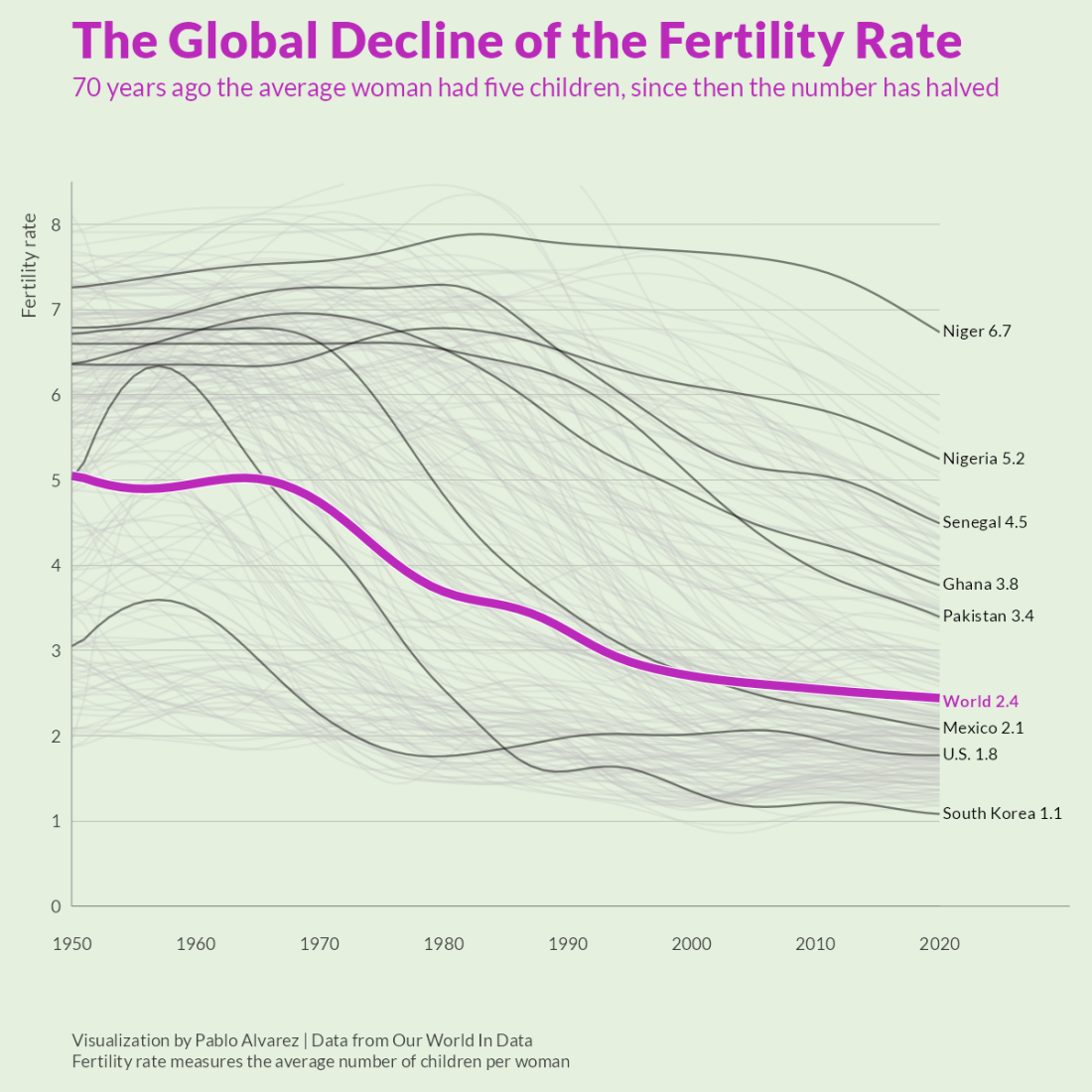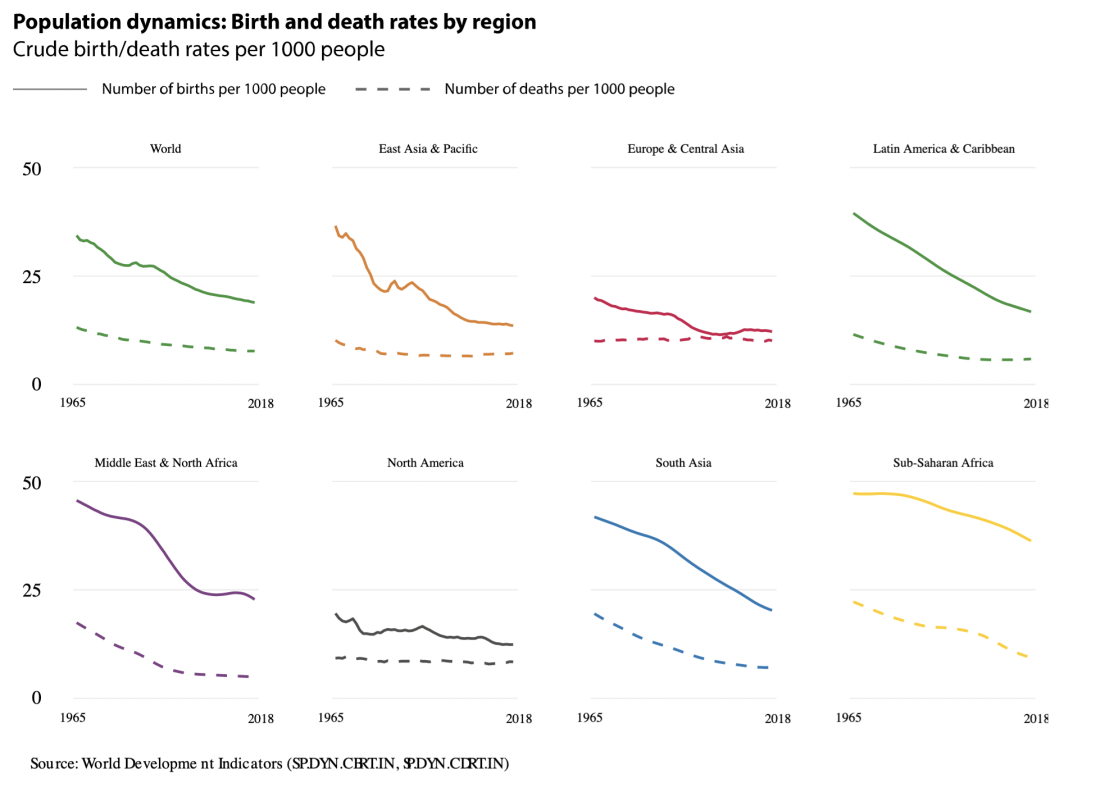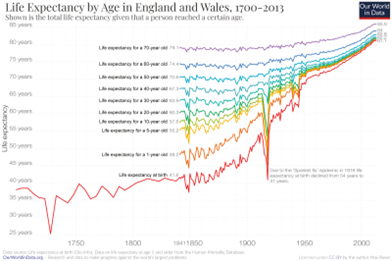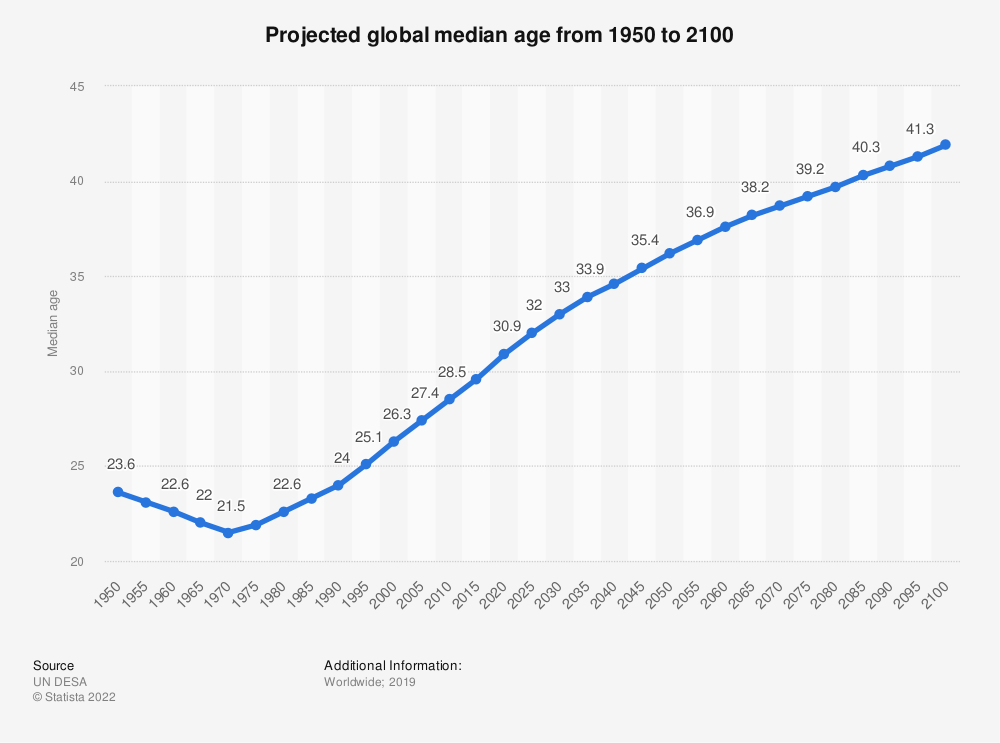
Figure 1 (Source: World Economic Forum)
While I was busy over the last few blogs talking about living and dying in the Anthropocene, a few major changes in the demography of the planet took place. These changes drove me to return to these issues, to try to analyze their consequences and impacts.
In a guest blog about 9 years ago, Jim Foreit, a noted professional demographer, addressed important demographic global developments that were in focus at that time (January 14, 2014). I wrote a thank-you comment to his blog that is probably still the longest comment of the 11 years that this blog has been running. A few key lines from my response are repeated below:
“The nature of exponential growth or decline are such that left unchecked they will lead to disasters. As Jim’s blog made clear, we have yet to develop some understanding how to stabilize populations on any level. The UN fiat of stabilizing the population at replacement rate without suggesting what policies have a chance of accomplishing it, is untenable.”
Nine years later, in November 2022, probably the most important marker in global population took place when the global population passed the 8 billion mark (it was 2 billion when I was born)
Another important marker that took place in the last few months is that China lost its “crown” of being the most populous country in the world, to India:
They are among hundreds of thousands of Chinese couples who turn to assisted reproductive technology every year after exhausting other options to get pregnant. They travel from all corners of the country to big cities like Beijing in the hopes of beating the odds of infertility. Many wait in long lines outside hospitals before sunrise, just for the possibility of a consultation.
Now, the Chinese government wants to make the technology [IVF], which it made legal in 2001, more accessible. It has promised to cover some of the cost — typically several thousand dollars for each round — under national medical insurance. It is one of more than a dozen policy measures that Chinese officials are throwing at what they see as a very big problem — a fertility rate so low that China’s population has started to shrink.
However, there is only one mechanism for the global population to change – changing the balance between births and deaths.
 Figure 2 (Source: World Bank)
Figure 2 (Source: World Bank)
Figure 2 shows that almost all over the world, births still exceed deaths. In Europe and Central Asia (I’m not sure what exactly is included in that category), the two dynamics have trended toward each other. The world population is still growing. However, in almost all the regions, the decrease in deaths is much slower than the decrease in births. Figure 1 shows the reason: fertility rates are decreasing almost everywhere, while the death rate is staying at a more constant rate (Figure 3).

Figure 3 (Source: Our World in Data)

Figure 4 (Source: Statista)
Figures 3 and 4 both illustrate the trend. Figure 3 shows the convergence of global life expectancy with age and Figure 4 shows the steady increase in the global median age. As these data show, globally, birth rates still exceed death rates but both trends show that in a few years, the death rate will surpass birth rates and the global population will start to shrink. Figure 4 also shows that the population is aging significantly, with the median age doubling from 1970, almost coinciding with the start of the Anthropocene. What are the consequences of these shifts and are we prepared to face them? Below are two paragraphs from a report that the UN wrote about the transition:
“Population ageing is a defining global trend of our time,” the UN Department for Economic and Social Affairs writes in its World Social Report 2023, calling it a “major success story” that brings both challenges and opportunities. One of the main challenges for countries with ageing populations is to ensure that the economy can support the consumption needs of a growing number of older people, be it by raising the legal retirement age, removing barriers to voluntary labor force participation of older people or by ensuring equitable access to education, health care and working opportunities throughout the lifespan, which can help to boost economic security at older ages.
Especially countries in the early stages of the demographic shift have the opportunity to plan ahead and implement the right measures ahead of time, to effectively manage the challenges that come with an ageing population.
Japan has one of the world’s lowest fertility rates (1.37). Here is what a recent National Geographic article said about the situation there:
Japan’s path foreshadows what’s coming in many areas of the world. China, South Korea, Italy, and Germany are on a similar trajectory; so too is the United States, although at a slower pace. Five years ago, the world reached an ominous milestone: For the first time in history, adults 65 and older outnumbered children under five years old.
If Japan is any guide, aging will change the fabric of society in ways both obvious and subtle. It will run up a huge tab that governments will struggle to pay. Meeting the challenge won’t be easy, but the future isn’t necessarily all downhill. Japan’s experience, with its characteristic attention to detail and design, suggests extreme aging—a world in which an increasing share of the population is old—may inspire an era of innovation.
In 2020, Japan’s health ministry launched eight “living labs” dedicated to developing nursing-care robots. Yet in a way, the entire country is one big living lab grappling with the repercussions of a rapidly aging society. In business, academia, and communities around Japan, countless experiments are under way, all aiming to keep the old healthy for as long as possible while easing the burden of caring for society’s frailest.
Here is how one Yale Professor (Born in Japan and educated at MIT) suggested dealing with the Japanese aging issue:
In interviews and public appearances, Yusuke Narita, an assistant professor of economics at Yale, has taken on the question of how to deal with the burdens of Japan’s rapidly aging society.
“I feel like the only solution is pretty clear,” he said during one online news program in late 2021. “In the end, isn’t it mass suicide and mass ‘seppuku’ of the elderly?” Seppuku is an act of ritual disembowelment that was a code among dishonored samurai in the 19th century.
Since Japan is an early indication of what is awaiting all of us, we should hope that we can find a better alternative that lets us learn to live in a declining, aging world population. I’ve said that climate change amounts to self-inflicted genocide but that doesn’t mean I endorse mass suicide. The next few blogs will focus on symptoms of population changes, more realistic remedies, and scaling (different rates of decline in different places).

I cannot believe that the world had a population of 2 billion when you were born and now you’ve seen it reach 8 billion!! This is another testament to how much history you’ve been a part of. I didn’t know that India has now become more populated than China. I think these figures are a little concerning. Thought fertility rates are decreasing, there are still more births than deaths due to people living longer. It’s great that modern medicine and knowledge has increased humans life spans, but it’s concerning that in less than a century, the population has grown by 6 billion. You wrote “The nature of exponential growth or decline are such that left unchecked they will lead to disasters.”
However, I don’t know how to keep something like this in check. We cannot become a totalitarian state and limit how many children people can have and we also cannot encourage or support a mass suicide. I think a solution would be to fix all the issues we have. The housing crisis, climate crisis, job crisis, financial crisis etc. These are all broad and it sounds naive to say, just fix all these crises. However, if the population continues to grow the issue will not be a huge population. The issue will be lack of access to food, housing and financial stability. As well as the climate crisis.